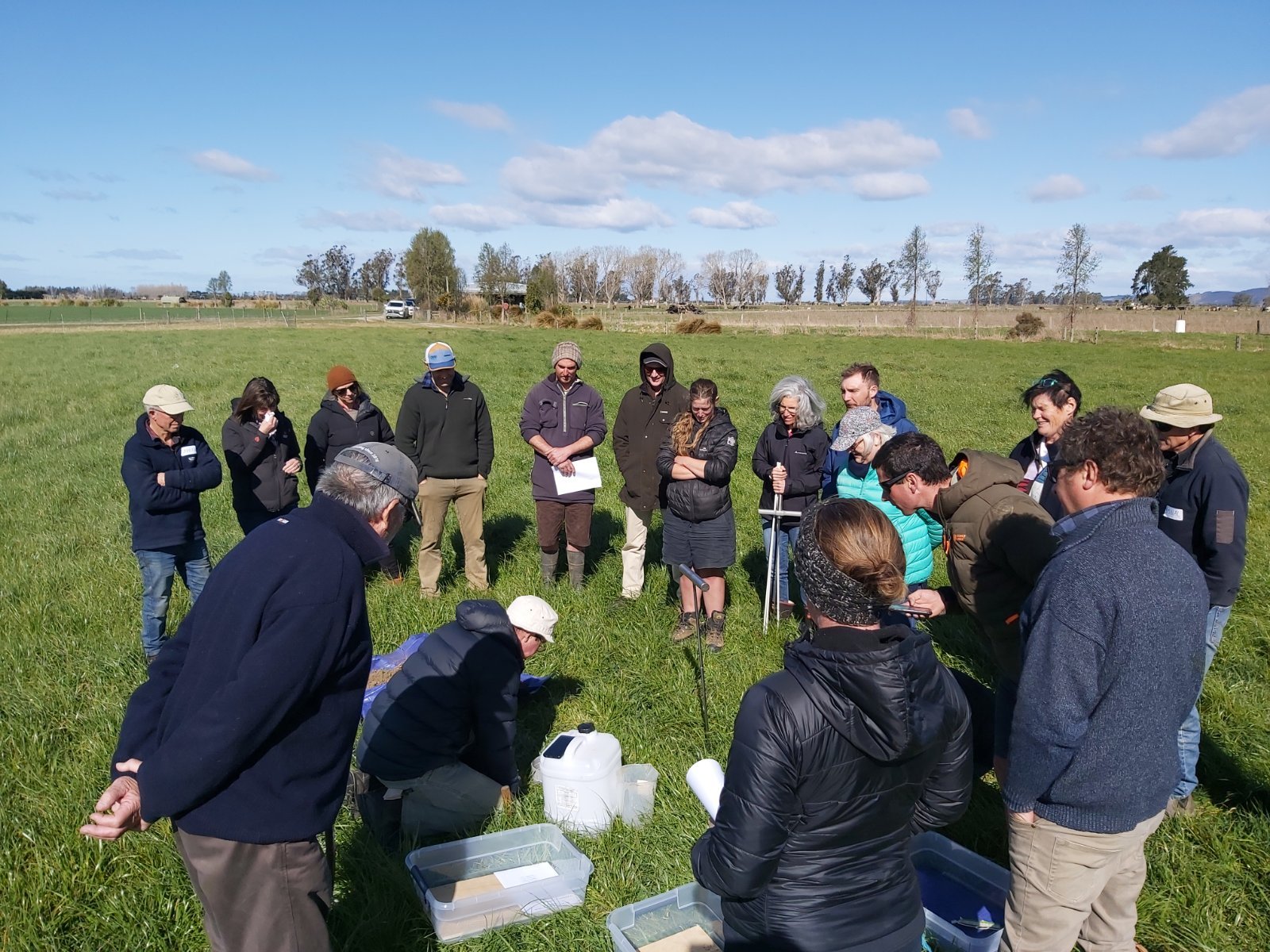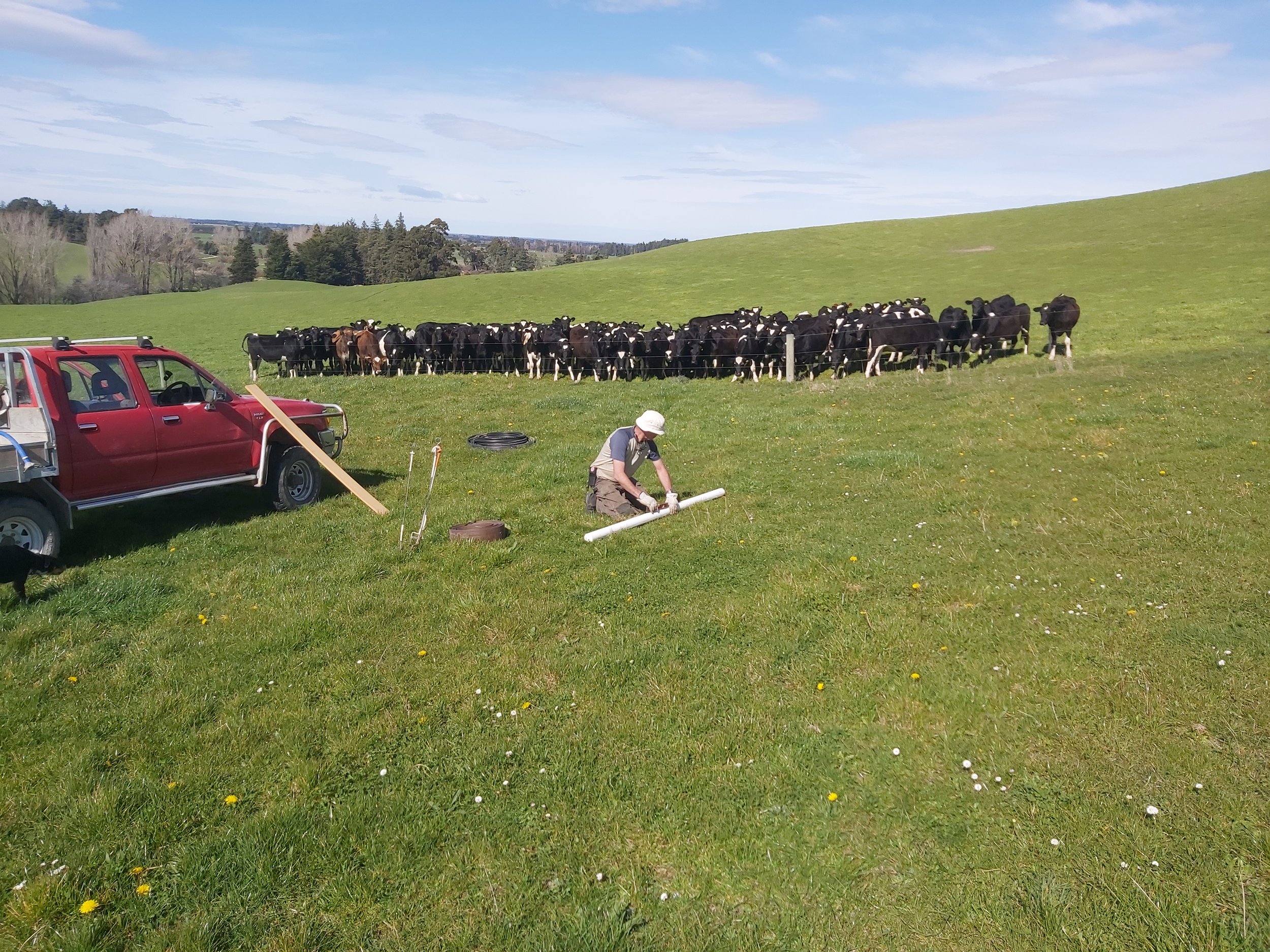Catch the Rain
A farmer education, research and innovation project focused on improving rainfall infiltration and soil moisture retention on non-irrigated pastoral farms.
WHO
Quorum Sense and participating farmers
funder
Beef + Lamb New Zealand
funding
$318,000
project timeframe
2.5 years (June 2023 - December 2025)
Project partners
Beef + Lamb New Zealand, Manaaki Whenua Landcare Research (SAG), Plant + Food Research, Vidacycle (Soil Mentor)
project team
Sam Lang (Project Lead), Charles Merfield (Field Technician), Dr Gwen Grelet (Science Lead), Greer Manderson (Science and Engagement Support), Richard Parkes (Interviews and workshop facilitation)
Why ‘Catch the Rain’?
Soil moisture is often the primary factor limiting plant growth on summer dry farms from late spring to autumn. Anecdotal and research evidence suggests that many farms are losing valuable summer/autumn rainfall as runoff which can exacerbate dry/drought conditions and increase flood risks and erosion - this is driven primarily by compaction, bare soil and soil water repellency (hydrophobicity). Similarly, there is an opportunity to reduce evapotranspiration by keeping soils covered and protected from the summer heat and wind, conserving moisture for plant growth.
‘Catch the Rain’ is designed to help;
Build farmer understanding of the factors affecting rainfall infiltration,
Measure and assess the problem/opportunity on individual farms, and
Support farmers to develop, trial and monitor practice/system changes
Share the learnings and results with the wider farming sector
Project timeline
June-October 2023:
Recruitment
Interview and workshops to set up project
Develop monitoring protocols
October 2023 - January 2024:
Confirm farmer trials and undertake baseline monitoring
Support farmer learning and sharing
January 2024 - April 2025:
Complete baseline monitoring
Finalise and share report on interview and workshop insights
Support farmer learning and sharing
Create a new ‘Toolbox’ section on improving rainfall infiltration and soil moisture retention
April 2025 - December 2025:
Finalise and share report on interview and workshop insights
Create and share supporting material on monitoring techniques and key practices
Ongoing support for trials and monitoring
Analyse results, write and share final reports

















19 interviews with farmers and scientists
4 workshops hosted from Mangatainoka to Gore including 43 farms, 60+ farmers, 10+ scientists/technical experts
Trial design process and Soil Mentor app developed and set up
Trial ideas collected and organised into clusters based on the main interventions being made in each trial - some trials have multiple interventions:
Grazing management (16)
Pasture species (18)
Biological inputs (14)
30 On-Farm Trial Plans developed
26+ Farms with trials established and baseline monitoring data collected (dry conditions have delayed some baseline monitoring)
3 on-farm field workshops hosted
Six webinars hosted to help participating farmers (and anyone else interested) deepen their understanding of various practices being trialed in Catch the Rain:
Monitoring farm health with Soil Mentor - November 2023
Identifying your farms limiting factors - March 2024
Regenerative grazing management - March 2024
Deferred grazing in New Zealand - April 2024
Diverse pastures in New Zealand - May 2024
Diverse forage crops - June 2024
Progress so far (as at 1 June 2024)
Next steps
Complete outstanding On-Farm Trial Plans and baseline monitoring (moisture allowing)
Maintain support for farmers with monitoring and trial implementation
Explore co-funding for additional sharing and learning opportunities, and advanced monitoring such as lab tests, automated devices, soil moisture meters, student projects etc
Examples of Catch the Rain on-farm trials
Example A:
Farm details: Southland, 800ha flat to rolling, sheep & beef breeding and finishing farm
Intervention: Grazing management
Trial question: Do longer pasture recoveries lead to improved rooting depth, improved rainfall infiltration and drainage, and more vigorous spring grass growth?
Trial design type: Treatment vs Control (x 2 replicates).
One paddock is split in half with half deferred and the other half grazed normally. Another paddock is grazed normally but >1m2 ‘exclusion cages’ are used to prevent grazing every other rotation, simulating longer recoveries.Monitoring sites: 4
Measurements: Visual Soil Assessment, infiltration, penetrometer, ground cover, pasture growth
Photo (below): Snapshot of photos taken with baseline measurements in Soil Mentor.
Example B:
Farm details: Wairarapa, 1300ha flat to steep, sheep, beef & arable farm
Intervention: Pasture species + Inputs
Trial question: Do multispecies pastures (with or without biological foliar inputs) improve soil structure, infiltration, drainage and resilience to drought?
Trial design type: Multi Treatment vs Control. Two neighboring paddocks with the same management history and established ryegrass based pastures, one performs better than the other. Establish new multispecies pasture in poor paddock and monitor changes over time and against better (control) paddock. Plan to apply biological inputs in strips to both paddocks and monitor for impact.
Monitoring sites: 4
Measurements: Visual Soil Assessment, infiltration, penetrometer, ground cover, pasture growth
Photo (below): Snapshot of photos taken with baseline measurements in Soil Mentor.
Example C:
Farm details: South Canterbury, 105ha rolling sheep and cattle farm
Intervention: Inputs
Trial question: Does a biological fertiliser program including foliars outperform traditional sulphur super in terms of soil health, pasture production, pasture quality and rainfall infiltration / runoff?
Trial design type: Treatment vs Control. Paddock spilt in half lengthways. Half will receive traditional sulphur super fertiliser. The other half will receive solid fertiliser including RPR and humates, with liquid applications of fish and seaweed. Trial will run for 2+ years.
Monitoring sites: 2
Measurements: Visual Soil Assessment, runoff (via installed collectors), penetrometer, ground cover, pasture growth
Photo (below): Snapshot of photos taken with baseline measurements in Soil Mentor.

